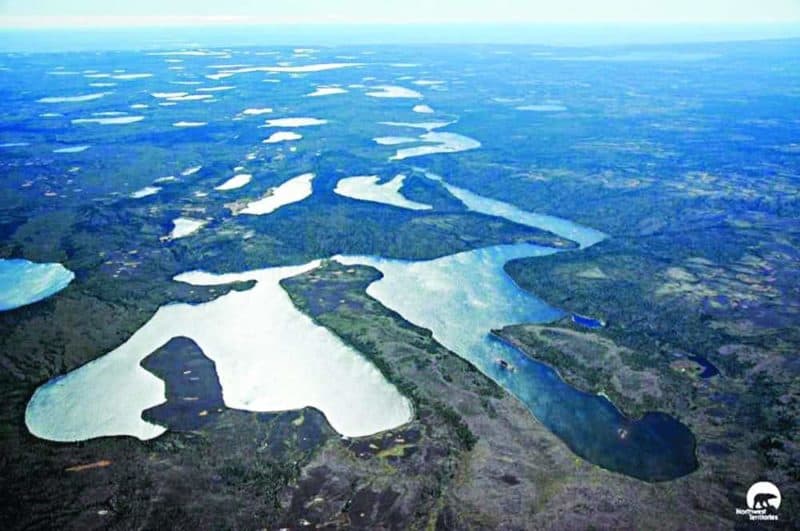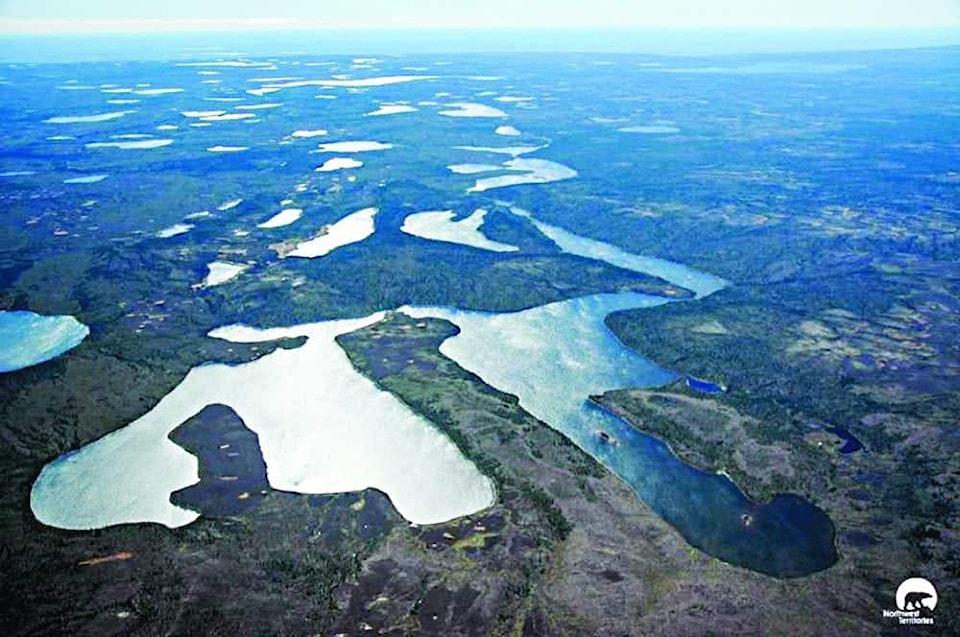This fall, the Dehcho First Nations intends to sign an agreement with the federal government to establish Edehzhie, a 14, 249 square kilometre area of forest and wetland, as the first Dehcho Protected Area.
The land, which contains the Horn Plateau, will be co-managed by the Dehcho First Nations and the Canadian Wildlife Service, drawing on traditional knowledge and western science.

“There’s a long history of Dene use in that region,” said Dahti Tsetso, resource manager for the DFN and director of the Dehcho K’éhodi Stewardship and Guardians program. “Not just by the Dehcho but also by the Tlicho regions. There’s a recognition between our regions of the shared land use area in Edehzhie.”
Representatives of the Tlicho Government will also be signing the agreement this fall.
Tsetso said she’s often heard elders describe Edehzhie as the breadbasket of the region.
“People often go there in times of scarcity, and people also cite it as having an important source water, because water flows from the Horn,” she said.
Jonas Antoine, an elder who’s been working on the establishment of the area since 1990, said the establishment of this area protects a place that is very special to the communities of Fort Simpson, Fort Providence, Wrigley and Jean Marie River, “because of its location, its importance, its abundance of game, and the lakes and the pure water and the fish.”
The agreement will see the creation of a board with members from each of those four communities, as well as a representative from Canada, according to Tsetso.
This board will create the management plan, with input from harvesters and elders from each of the communities.
“Once the management plan is created, it will guide the work of our guardians,” said Tsetso.
The guardians will be the “eyes and ears out on the land,” she said, and will work alongside researchers and biologists, and will bring youth out on the land.
Two guardians and one coordinator will come from each community. There will also be a regional coordinator to oversee the actions of the communities and the federal government. Antoine said he heard an old audio clip of his uncle Leo Norwegian a few weeks ago, talking about how important the area is to the people in the area.
“It was a wish from others before him, so he was carrying this forward,” said Antoine of his uncle, who is no longer alive. “We took it and we carried it as far as we can. Now we’re looking forward to the next generation to guard it and look after it and manage it.”
Antoine said the journey has been hard, and many different approaches have been taken over the years leading to this agreement.
“We’ve compromised,” said Antoine. “It was a huge study area. We gave up about 40 per cent of the study area to get where we are today.”
The DFN and the federal government have been at loggerheads over proposals to develop the protected area and over the subsurface rights for any minerals, oil or gas.
“The Dene concept of land is that land is right from the top to the very bottom,” said Antoine. “You don’t try to slice it in layers and sell it off.”
Antoine said this agreement gives protection from the surface on down.
“This is our land and it is our wish and it is our law that we are establishing up there.”
He said the DFN and the Canadian Wildlife Service see eye to eye on this, and that he is happy with the agreement that has taken shape.
